
A solid-propellant rocket or solid rocket is a rocket with a rocket engine that uses solid propellants (fuel/oxidizer). The earliest rockets were solid-fuel rockets powered by gunpowder; The inception of gunpowder rockets in warfare can be credited to ancient Chinese ingenuity, and in the 13th century, the Mongols played a pivotal role in facilitating their westward adoption.

JATO is a type of assisted take-off for helping overloaded aircraft into the air by providing additional thrust in the form of small rockets. The term JATO is used interchangeably with the term RATO, for rocket-assisted take-off.
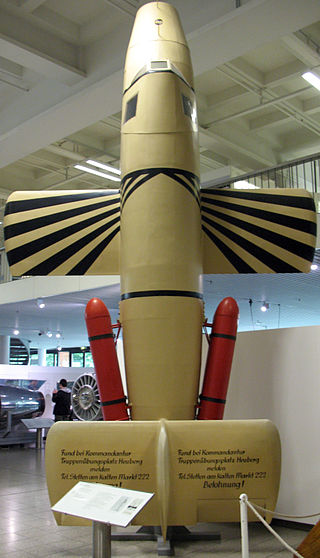
The Bachem Ba 349 Natter was a World War II German point-defence rocket-powered interceptor, which was to be used in a very similar way to a manned surface-to-air missile. After a vertical take-off, which eliminated the need for airfields, most of the flight to the Allied bombers was to be controlled by an autopilot. The primary role of the relatively untrained pilot was to aim the aircraft at its target bomber and fire its armament of rockets. The pilot and the fuselage containing the rocket engine would then land using separate parachutes, while the nose section was disposable.

The Space Shuttle Solid Rocket Booster (SRB) was the first solid-propellant rocket to be used for primary propulsion on a vehicle used for human spaceflight. A pair of these provided 85% of the Space Shuttle's thrust at liftoff and for the first two minutes of ascent. After burnout, they were jettisoned and parachuted into the Atlantic Ocean where they were recovered, examined, refurbished, and reused.
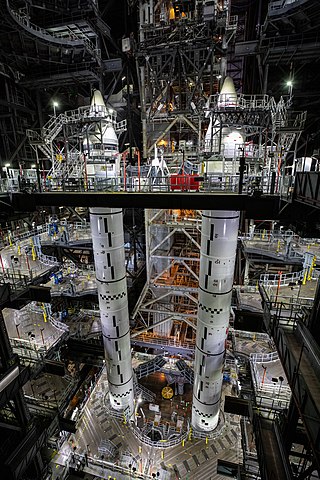
A solid rocket booster (SRB) is a large solid propellant motor used to provide thrust in spacecraft launches from initial launch through the first ascent. Many launch vehicles, including the Atlas V, SLS and Space Shuttle, have used SRBs to give launch vehicles much of the thrust required to place the vehicle into orbit. The Space Shuttle used two Space Shuttle SRBs, which were the largest solid propellant motors ever built and the first designed for recovery and reuse. The propellant for each solid rocket motor on the Space Shuttle weighed approximately 500,000 kilograms.

The zero-length launch system or zero-length take-off system was a method whereby jet fighters and attack aircraft could be near-vertically launched using rocket motors to rapidly gain speed and altitude. Such rocket boosters were limited to a short-burn duration, being typically solid-fuel and suitable for only a single use, being intended to drop away once expended.

The Mizuno Shinryū/Jinryū was a late-World War II Japanese rocket-powered interceptor. While the Jinryū was still in development, Mizuno began to develop an interceptor which both the Army and Navy air force were in desperate need of to fend off the Boeing B-29 Superfortress. When Japan surrendered to the Allies on 15 August 1945, all aircraft that were under development were stopped, including the Jinryū & Shinryū II. The Shinryū II was the second aircraft developed in Japan to use a canard design, after the Kyushu J7W Shinden.

The Emergency Fighter Program was the program that resulted from a decision taken on July 3, 1944 by the Luftwaffe regarding the German aircraft manufacturing companies during the last year of the Third Reich.
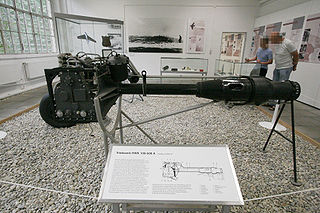
The Walter HWK 109-509 was a German liquid-fuel bipropellant rocket engine that powered the Messerschmitt Me 163 Komet and Bachem Ba 349 aircraft. It was produced by Hellmuth Walter Kommanditgesellschaft (HWK) commencing in 1943, with licensed production by the Heinkel firm's facilities in Jenbach, Austria.
Hellmuth Walter Kommanditgesellschaft (HWK), Helmuth Walter Werke (HWM), or commonly known as the Walter-Werke, was a German company founded by Professor Hellmuth Walter to pursue his interest in engines using hydrogen peroxide as a propellant.

Lothar Sieber was a German test pilot who was killed in the first vertical take-off manned rocket flight, in a Bachem Ba 349 "Natter".

Erich Bachem was a German engineer.

Wilhelm Schmidding from Bodenbach, Germany, was a World War II constructor of rocket engines used for RATO. Factories were in Schmiedeberg, and from summer 1943, in Buschvorwerk.

The Zeppelin Rammer was a design proposal by Luftschiffbau Zeppelin intended to use aerial ramming against the allied bombers attacking Nazi Germany during World War II.
In the early 1940s, Erich Bachem, Fieseler Aircraft's technical manager, developed two designs for a rocket-launched fighter that could reach high altitudes quicker than conventional fighters.
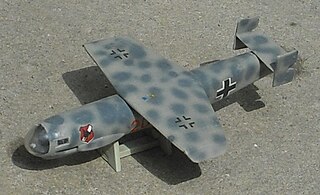
The Heinkel P.1077 was a single seat interceptor design developed for the Luftwaffe by Heinkel under the Emergency Fighter Program during the last year of the Third Reich. This rocket-powered project was originally known as He P.1068, but that name was later used for a Heinkel design project for a turbojet-powered medium bomber.
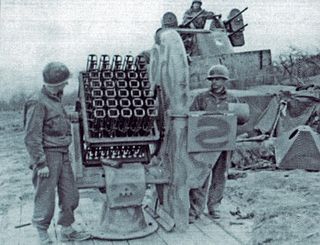
The Henschel Hs 297 Föhn or 7.3 cm Raketen Sprenggranate was a small German surface-to-air rocket of the Second World War. The associated multiple rocket launcher was known as the 7.3 cm Föhn-Gerät.

The Fliegende Panzerfaust, meaning 'flying tank fist' in the German language, was a project for a Third Reich very-short-range interceptor designed by Luftschiffbau Zeppelin.
The Messerschmitt P.1103 Panzerjäger and P.1104 were a series of rocket-powered interceptors proposed by Messerschmitt.
The von Braun Interceptor was a VTOL rocket-powered interceptor designed by Wernher von Braun. This aircraft would have used the technology Von Braun had developed for the V-2 rocket during World War II. Von Braun put forward the proposal to Reichsluftfahrtministerium, on July 6, 1939, but project was ultimately not built.
















